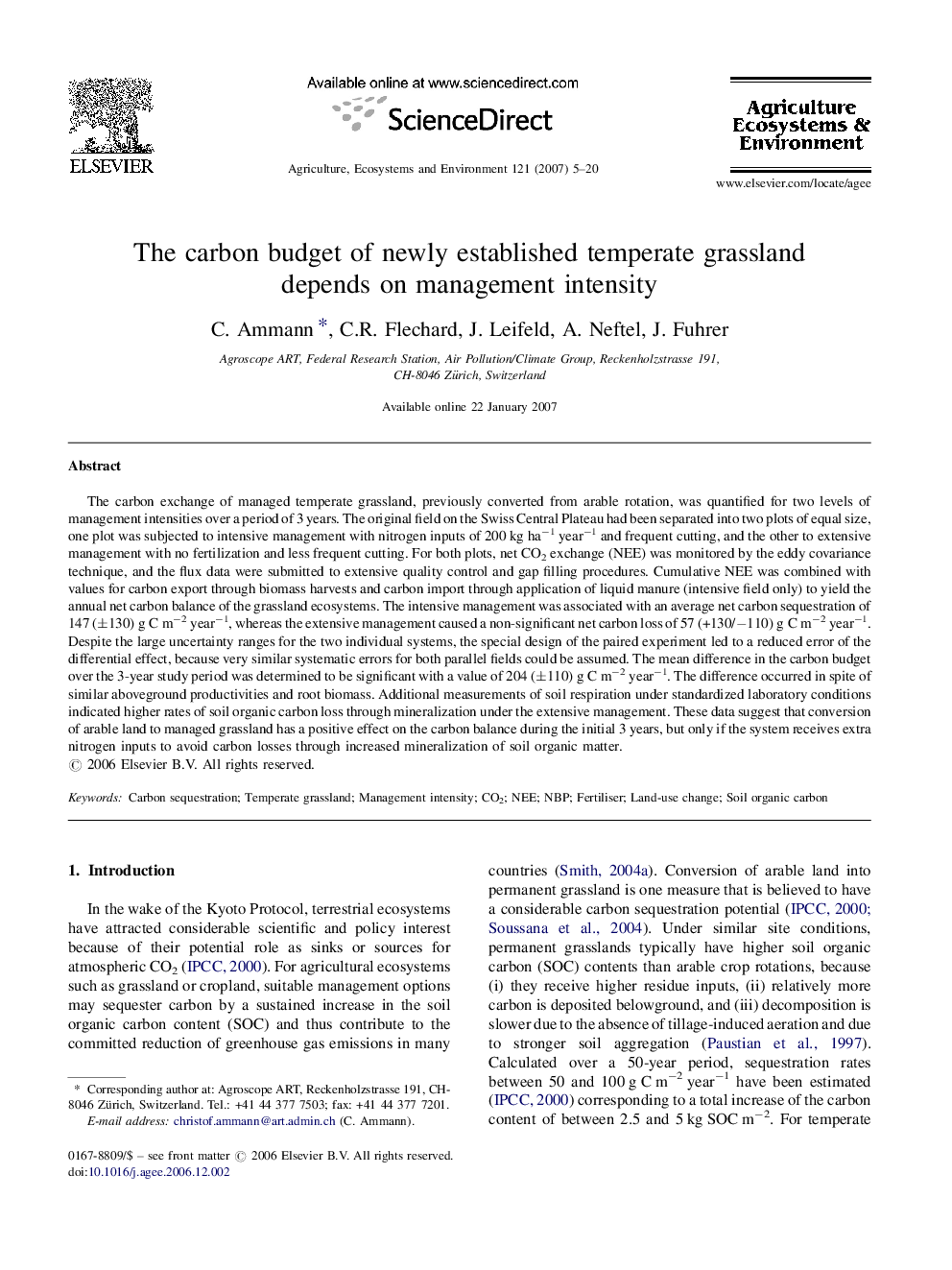| کد مقاله | کد نشریه | سال انتشار | مقاله انگلیسی | نسخه تمام متن |
|---|---|---|---|---|
| 2415691 | 1552140 | 2007 | 16 صفحه PDF | دانلود رایگان |

The carbon exchange of managed temperate grassland, previously converted from arable rotation, was quantified for two levels of management intensities over a period of 3 years. The original field on the Swiss Central Plateau had been separated into two plots of equal size, one plot was subjected to intensive management with nitrogen inputs of 200 kg ha−1 year−1 and frequent cutting, and the other to extensive management with no fertilization and less frequent cutting. For both plots, net CO2 exchange (NEE) was monitored by the eddy covariance technique, and the flux data were submitted to extensive quality control and gap filling procedures. Cumulative NEE was combined with values for carbon export through biomass harvests and carbon import through application of liquid manure (intensive field only) to yield the annual net carbon balance of the grassland ecosystems. The intensive management was associated with an average net carbon sequestration of 147 (±130) g C m−2 year−1, whereas the extensive management caused a non-significant net carbon loss of 57 (+130/−110) g C m−2 year−1. Despite the large uncertainty ranges for the two individual systems, the special design of the paired experiment led to a reduced error of the differential effect, because very similar systematic errors for both parallel fields could be assumed. The mean difference in the carbon budget over the 3-year study period was determined to be significant with a value of 204 (±110) g C m−2 year−1. The difference occurred in spite of similar aboveground productivities and root biomass. Additional measurements of soil respiration under standardized laboratory conditions indicated higher rates of soil organic carbon loss through mineralization under the extensive management. These data suggest that conversion of arable land to managed grassland has a positive effect on the carbon balance during the initial 3 years, but only if the system receives extra nitrogen inputs to avoid carbon losses through increased mineralization of soil organic matter.
Journal: Agriculture, Ecosystems & Environment - Volume 121, Issues 1–2, June 2007, Pages 5–20